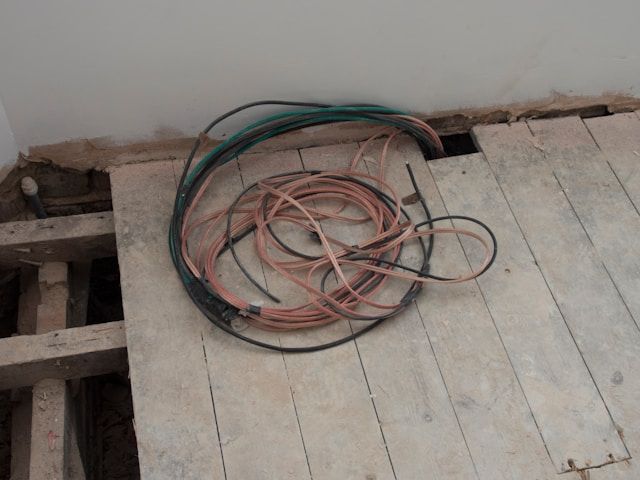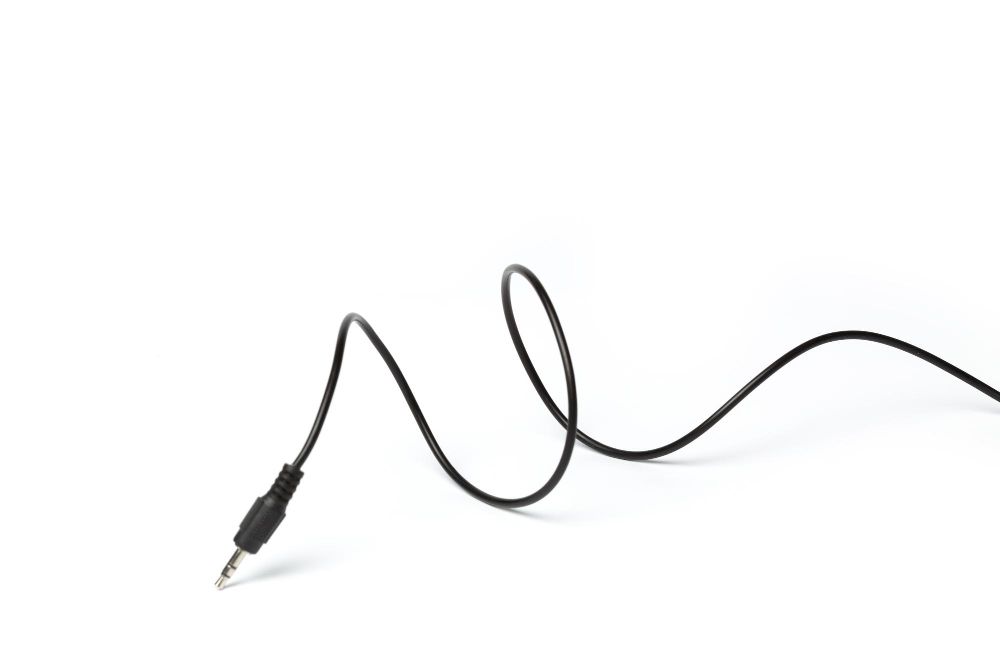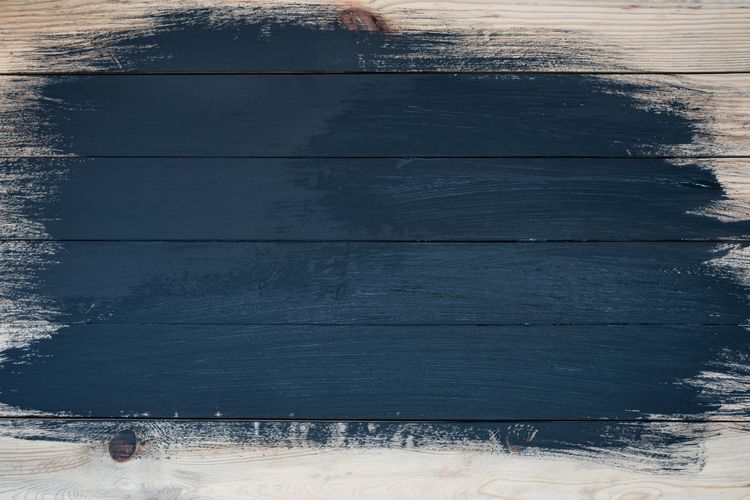How to Hide Cables Without Damaging Your Wooden Floor

Your beautiful wooden floor is the centerpiece of your room, a testament to timeless elegance and warmth. But snaking across its surface, a tangled mess of cables for your TV, internet router, gaming console, and lamps can instantly shatter that aesthetic. The dilemma is real: how do you manage this modern necessity without compromising the integrity and beauty of your vintage herringbone or your sleek, modern oak flooring?
The thought of drilling holes or channeling grooves into that precious wood is enough to make any homeowner shudder. The good news is that you don't have to. The era of choosing between functionality and preservation is over. This guide is dedicated to innovative, non-invasive solutions that will restore the pristine look of your space without a single scratch, screw, or drop of glue touching your floor.
Why the "No-Damage" Rule is Crucial for Wood Floors
Before we dive into the solutions, let's understand the "why." Wood floors are a significant investment. Drilling into them isn't just a cosmetic concern; it can:
- Void Warranties: Many flooring manufacturers' warranties become void if the planks are drilled or cut.
- Invite Moisture and Pests: Any hole, no matter how small, can become a conduit for moisture, leading to warping, or even tiny pests.
- Complicate Refinishing: Future sanding and refinishing projects become infinitely more complex with holes and channels to work around.
- Permanently Devalue the Installation: A damaged floor can reduce the value of your property.
With these principles in mind, let's explore the clever solutions that keep your floors—and your peace of mind—intact.

Category 1: Surface-Level & Adhesive Solutions
These methods work on top of your floor, using clever designs or mild adhesives to route cables neatly.
Cable Raceways / Cord Concealers
These are the workhorses of cable management. Typically made of PVC or plastic, they are hollow tubes or channels that stick or screw to your baseboards or walls, with the cables tucked inside.
How to Use: Choose a paintable raceway for a seamless look. Clean your baseboard thoroughly with isopropyl alcohol, peel the adhesive backing, and press the raceway firmly into place along the skirting board. Run your cables inside and snap the cover shut.
Advantages:
- Highly Effective: Can manage a large number and thickness of cables.
- Clean, Unified Look: Transforms a tangled mess into a single, neat line.
- Accessible: Easy to add or remove cables as needed.
- Paintable: Blends perfectly with your wall color.
Disadvantages:
- Potential for Residue: Low-quality adhesives can leave a sticky residue on baseboards when removed. (Tip: Use a stronger, double-sided tape like VHB tape for a more secure, yet removable, hold).
- Slight Protrusion: It adds a visible element to your wall or floor junction, which might not appeal to minimalists.
Self-Adhesive Cable Clips
For a more minimalist approach, small adhesive clips can be used to guide cables along the least visible paths.
How to Use: Stick the clips to the back of furniture legs, the underside of desks, or along the very top edge of the baseboard. Route the cable through the clips to create a disciplined path. Advantages:
- Extremely Discreet: When placed correctly, they are almost invisible.
- Inexpensive: A very low-cost solution.
- Flexible: Easy to reposition and reconfigure.
Disadvantages:
- Limited Capacity: Only suitable for a few, light cables.
- Adhesive Reliability: The small surface area of the adhesive can fail, especially on slightly textured surfaces.
Category 2: Furniture & Design-Centric Solutions
This approach uses your existing room layout and smart furniture choices to solve the problem for you.
Strategic Area Rugs and Cable Tunnels
A well-placed rug is more than a comfort for your feet; it's a perfect cable-hiding tool.
How to Use: Use a flat, low-profile cable cover (often called a "cable tunnel" or "cable protector") that is designed to be walked on. Place it on the floor where the cables need to cross a walkway, and then lay your area rug directly on top. The cables run safely underneath, completely hidden and protected.
Advantages:
- Completely Invisible: The ultimate "out of sight, out of mind" solution.
- Protects Cables: Prevents tripping and damage to the cables themselves.
- Enhances Decor: The rug adds to the room's aesthetic.
Disadvantages:
- Limited to Rug Locations: You can only run cables where you want a rug.
- Access Difficulty: To unplug or change a cable, you have to lift the rug and the tunnel.
Leveraging Furniture and Cable Management Boxes
Turn necessary furniture into a functional part of your cable management system.
How to Use:
- Sofa/Console Table: Run cables behind large furniture like sofas and media consoles. Use a decorative cable management box on the floor behind the TV unit to gather all power strips and excess cable length into one neat, boxed unit.
- Cable Sleeves/Wraps: For cables that run from a desk to a wall outlet, use a fabric sleeve (like a DNA helix wrap) that bundles multiple cables into one, thicker, and much neater-looking cord.
Advantages:
- Aesthetically Pleasing: Management boxes and sleeves come in various designs to match your decor.
- Highly Effective for Media Centers: Solves the biggest cable eyesore in most homes.
- No Adhesives Required: Relies on gravity and strategic placement.
Disadvantages:
- Requires Furniture: Not a solution for cables running across open floor space.
- Can Encourage "Piling": It's easy to just shove cables behind a cabinet, leading to a disorganized, dusty tangle over time.

Category 3: The "Invisible" & Wireless Solutions
For the ultimate clean look, these methods aim to make the cables disappear entirely.
Going (Partially) Wireless
The most effective way to hide cables is to eliminate them altogether where possible.
How to Use: Invest in modern technology. Use wireless HDMI kits (like those from Nyrius or J-Tech) to transmit audio/video from a media center to a TV on the opposite wall. Prioritize devices that charge wirelessly.
Advantages:
- Maximum Cleanliness: Drastically reduces the number of cables needed.
- Ultimate Flexibility: Allows for easy rearrangement of furniture. Disadvantages:
- Cost: High-quality wireless kits can be expensive.
- Not a Complete Solution: You still need power cables for the transmitters, receivers, and the TV itself.
- Potential for Lag: For competitive gaming, a wired connection is still superior.
Strategic Routing Through Adjacent Rooms
For a permanent and truly professional-looking solution that doesn't touch the floor, think outside the box—or rather, outside the room.
How to Use: This involves running cables through the wall cavity, but from an adjacent room or the ceiling. For instance, if your TV is on a wall that backs onto a closet, you can drill a single, discreet hole in the closet's drywall (not your wood floor) to feed all cables through. The power strip and equipment can even be housed in the closet. Advantages:
- 100% Invisible in the Living Space: The gold standard for a clean install.
- No Floor Contact Whatsoever: The wooden floor is entirely out of the equation.
- Professional Finish: Results in a look that rivals high-end hotel and corporate installations.
Disadvantages:
- Increased Complexity: Requires basic DIY skills to cut drywall and possibly use in-wall rated cables.
- Not Universally Applicable: Depends on the specific layout of your home.
Managing cables in a room with a beautiful wooden floor is not a battle between form and function; it's an exercise in creative problem-solving. From the simple elegance of a well-placed rug and cable tunnel to the high-tech appeal of wireless systems and the sheer cleverness of routing through a closet, you have a wealth of options. By choosing a non-invasive method, you are not just tidying cables for today. You are preserving the beauty, value, and integrity of your wooden floor for all the tomorrows to come. So, banish the tangled mess with confidence, knowing you can achieve a sleek, modern home without sacrificing the timeless charm of your wood.



